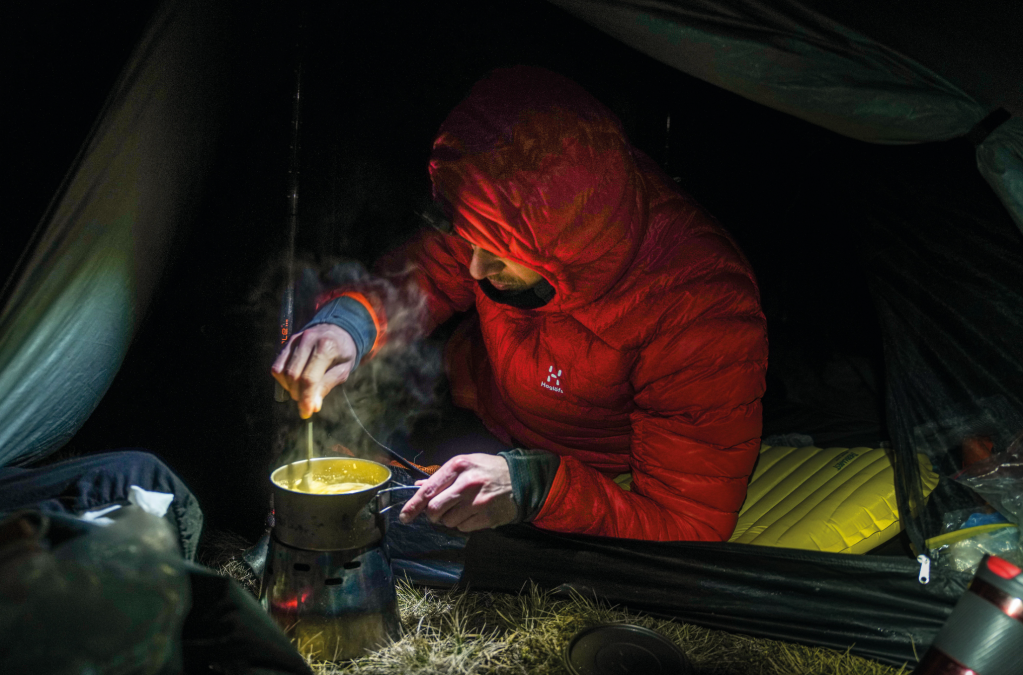Are sleeping mats waterproof? The answer to this question somewhat depends on your definition, the type of mat you use and the process of cleaning and caring for your mat you undertake. First, let’s look at each different type of sleeping mat.
Are sleeping mats waterproof?
Foam sleeping mats

Camping with just a foam pad is not recommended in anything other than warm, dry conditions. Credit: Murray Hemingway
Foam can be an incredibly tough material – consider the foam used as insulation perhaps throughout your house. But, not all foam sleeping mats are created equal.
Some foams do absorb water if left in contact with it for sustained periods. This can seriously hamper insulation, and make your sleeping bag feel cold and damp. If your mat isn’t quick-drying, it could also mean you’re carrying water weight out of camp with you the next morning. Specifically, open-cell foam is neither waterproof nor water-resistant.
Other types of foam can take a real drenching, however. Closed-cell foam is actually water-resistant, but only the higher-density closed cell foams are truly waterproof. If you’re camping in all seasons and weathers, invest in a high density closed-cell foam mat.
Self-inflating sleeping mats
Self-inflating mats are crafted with a valve that, when opened, allows for a combination of foam and air to inflate the mat. While the foam component of the mat may be dense enough to withstand damp, the mat will is also likely to incorporate ripstop polyester or nylon. These materials are designed to be lightweight – but not waterproof.

Cooking in camp in the Cairngorms. Credit: David Lintern
Water-repellent coatings can be added and this is a good idea if you’re intending to use your sleeping mat outdoors beyond the ‘walls’ of your tent for some protection from moisture. If bivvying, invest in a closed-cell foam mat to lay under your sleeping mat to prevent punctures, rips and tears, and to add a layer of protection from moisture.
Likewise, if you sleep under a camping quilt directly onto your mat, it’s a good idea to give the mat a coating as well as a wipe down after each use to prevent build up of bodily oils and grime (this is especially important during biting insect season as the DEET in insect repellent can harm coatings.)

A camping quilt, one of the alternates to sleeping bags. Credit: Chris Townsend
The moisture build up you should be careful to avoid with self-inflating sleeping mats is actually within the mat itself. While self-inflating mats can do what they say on the tin and inflate without input from you, most mats still need a puff of air or two to further inflate the mat for added comfort. This is especially true for backpackers who prefer a firm mat.
Your breath contains moisture and this can build up over time, potentially damaging the mechanisms or you mat – not to mention smelling rather musty.
Inflatable sleeping mats
As the more lightweight but less durable sleeping mat option, inflatable sleeping mats are more susceptible to the elements in the ways described above as with self-inflating mats. But considering inflatable sleeping mats require the backpacker to fill the mats entirely with air, with no closed-cell foam, the moisture build up can be exacerbated. Indeed, when you consider that the air inflating the mat itself is made up of tiny water particles, you can see why care of your inflatable sleeping mat is important.

James Forrest preparing for camp in the Rhinogydd. Credit: Benjamin Cannon
Many sleeping mat manufacturers get around this by providing pump sacks or alternative systems to fill the mat with air. This not only saves your breath but staves off all that moisture build up inside the mat which can cause mold and mildew to develop. These can not only see you suffering nasty odours, but also stick together, rendering the mat useless. This is why it’s important to take good care of any air mat – self-inflating or not – by opening the valve and airing the mat out after each use, storing it loosely in a cool, dry place in a moisture-repellent sack.
When washing your sleeping mat use non-detergent specialist washes such as Nikwax and Grangers to protect the mat coatings and fabrics. Some manufacturers also sell their own specialist formulas. If mould and mildew has already developed, look for a cleanser with odour-eliminating qualities.








